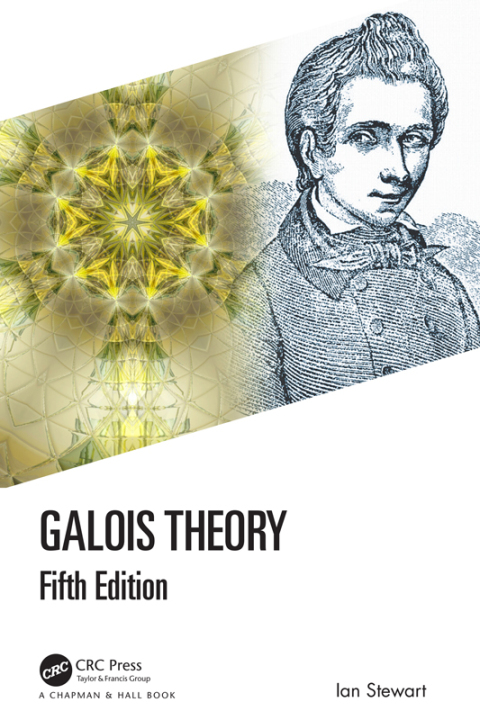Description
Efnisyfirlit
- Cover Page
- Half-Title Page
- Title Page
- Copyright Page
- Contents
- Acknowledgements
- Preface to the Fifth Edition
- Historical Introduction
- 1 Classical Algebra
- 1.1 Complex Numbers
- 1.2 Subfields and Subrings of the Complex Numbers
- 1.3 Solving Equations
- 1.4 Solution by Radicals
- 2 The Fundamental Theorem of Algebra
- 2.1 Polynomials
- 2.2 Fundamental Theorem of Algebra
- 2.3 Implications
- 3 Factorisation of Polynomials
- 3.1 The Euclidean Algorithm
- 3.2 Irreducibility
- 3.3 Gauss’s Lemma
- 3.4 Eisenstein’s Criterion
- 3.5 Reduction Modulo p
- 3.6 Zeros of Polynomials
- 4 Field Extensions
- 4.1 Field Extensions
- 4.2 Rational Expressions
- 4.3 Simple Extensions
- 5 Simple Extensions
- 5.1 Algebraic and Transcendental Extensions
- 5.2 The Minimal Polynomial
- 5.3 Simple Algebraic Extensions
- 5.4 Classifying Simple Extensions
- 6 The Degree of an Extension
- 6.1 Definition of the Degree
- 6.2 The Tower Law
- 6.3 Primitive Element Theorem
- 7 Ruler-and-Compass Constructions
- 7.1 Approximate Constructions and More General Instruments
- 7.2 Constructions in ℂ
- 7.3 Specific Constructions
- 7.4 Impossibility Proofs
- 7.5 Construction from a Given Set of Points
- 8 The Idea behind Galois Theory
- 8.1 A First Look at Galois Theory
- 8.2 Galois Groups According to Galois
- 8.3 How to Use the Galois Group
- 8.4 The Abstract Setting
- 8.5 Polynomials and Extensions
- 8.6 The Galois Correspondence
- 8.7 Diet Galois
- 8.8 Natural Irrationalities
- 9 Normality and Separability
- 9.1 Splitting Fields
- 9.2 Normality
- 9.3 Separability
- 10 Counting Principles
- 10.1 Linear Independence of Monomorphisms
- 11 Field Automorphisms
- 11.1 K-Monomorphisms
- 11.2 Normal Closures
- 12 The Galois Correspondence
- 12.1 The Fundamental Theorem of Galois Theory
- 13 Worked Examples
- 13.1 Examples of Galois Groups
- 13.2 Discussion
- 14 Solubility and Simplicity
- 14.1 Soluble Groups
- 14.2 Simple Groups
- 14.3 Cauchy’s Theorem
- 15 Solution by Radicals
- 15.1 Radical Extensions
- 15.2 An Insoluble Quintic
- 15.3 Other Methods
- 16 Abstract Rings and Fields
- 16.1 Rings and Fields
- 16.2 General Properties of Rings and Fields
- 16.3 Polynomials Over General Rings
- 16.4 The Characteristic of a Field
- 16.5 Integral Domains
- 17 Abstract Field Extensions and Galois Groups
- 17.1 Minimal Polynomials
- 17.2 Simple Algebraic Extensions
- 17.3 Splitting Fields
- 17.4 Normality
- 17.5 Separability
- 17.6 Galois Theory for Abstract Fields
- 17.7 Conjugates and Minimal Polynomials
- 17.8 The Primitive Element Theorem
- 17.9 Algebraic Closure of a Field
- 18 The General Polynomial Equation
- 18.1 Transcendence Degree
- 18.2 Elementary Symmetric Polynomials
- 18.3 The General Polynomial
- 18.4 Cyclic Extensions
- 18.5 Solving Equations of Degree Four or Less
- 18.6 Explicit Formulas
- 19 Finite Fields
- 19.1 Structure of Finite Fields
- 19.2 The Multiplicative Group
- 19.3 Counterexample to the Primitive Element Theorem
- 19.4 Application to Solitaire
- 20 Regular Polygons
- 20.1 What Euclid Knew
- 20.2 Which Constructions are Possible?
- 20.3 Regular Polygons
- 20.4 Fermat Numbers
- 20.5 How to Construct a Regular 17-gon
- 21 Circle Division
- 21.1 Genuine Radicals
- 21.2 Fifth Roots Revisited
- 21.3 Vandermonde Revisited
- 21.4 The General Case
- 21.5 Cyclotomic Polynomials
- 21.6 Galois Group of ℚ(ζ)/ℚ
- 21.7 Constructions Using a Trisector
- 22 Calculating Galois Groups
- 22.1 Transitive Subgroups
- 22.2 Bare Hands on the Cubic
- 22.3 The Discriminant
- 22.4 General Algorithm for the Galois Group
- 23 Algebraically Closed Fields
- 23.1 Ordered Fields and Their Extensions
- 23.2 Sylow’s Theorem
- 23.3 The Algebraic Proof
- 24 Transcendental Numbers
- 24.1 Irrationality
- 24.2 Transcendence of e
- 24.3 Transcendence of π
- 25 What Did Galois Do or Know?
- 25.1 List of the Relevant Material
- 25.2 The First Memoir
- 25.3 What Galois Proved
- 25.4 What is Galois up to?
- 25.5 Alternating Groups, Especially A5
- 25.6 Simple Groups Known to Galois
- 25.7 Speculations about Proofs
- 25.8 A5 is Unique
- 26 Further Directions
- 26.1 Inverse Galois Problem
- 26.2 Differential Galois Theory
- 26.3 p-adic Numbers
- References
- Index







Reviews
There are no reviews yet.